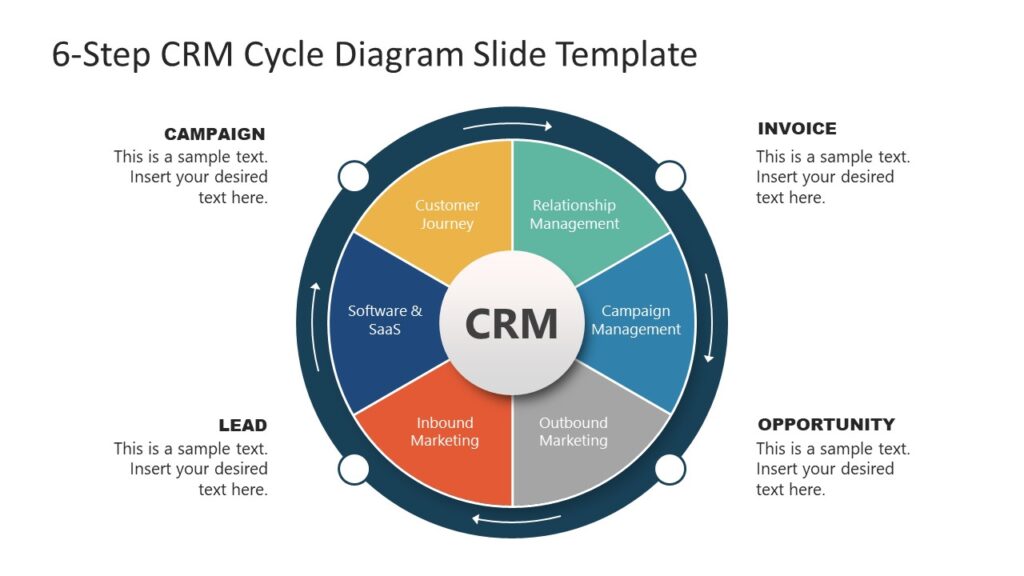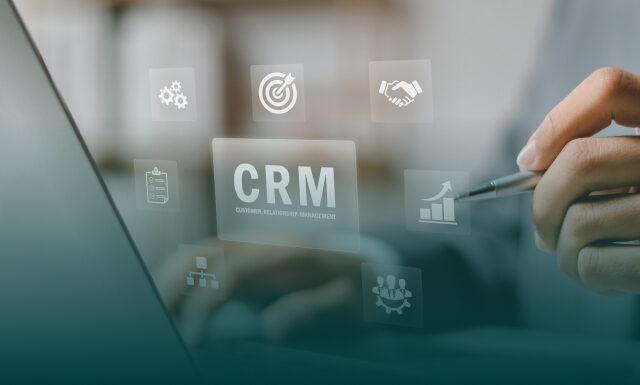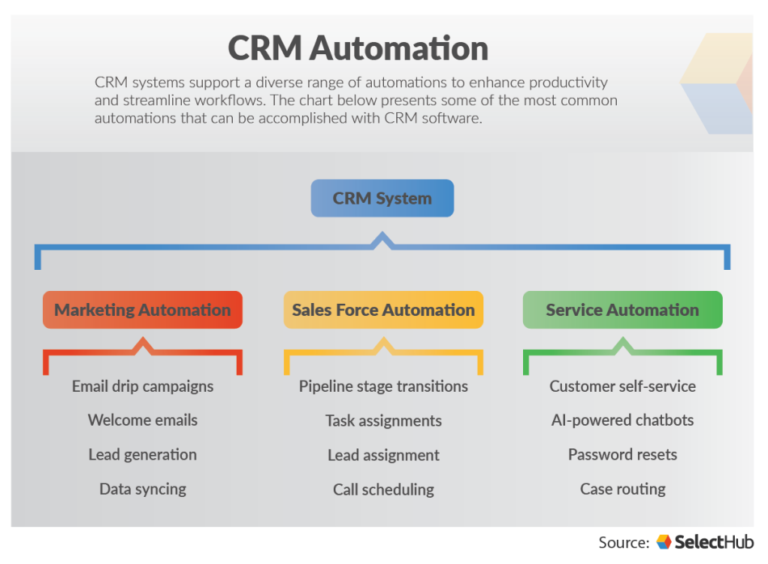Mastering CRM Marketing Workflows: A Comprehensive Guide to Supercharge Your Sales and Customer Engagement

Mastering CRM Marketing Workflows: A Comprehensive Guide to Supercharge Your Sales and Customer Engagement
In today’s fast-paced business environment, customer relationship management (CRM) has become more than just a buzzword; it’s the backbone of successful marketing strategies. But simply having a CRM system isn’t enough. The real magic happens when you leverage CRM marketing workflows. These automated sequences are the engine that drives efficiency, personalization, and ultimately, increased revenue. This comprehensive guide will delve deep into the world of CRM marketing workflows, providing you with the knowledge and tools to transform your customer interactions and propel your business forward.
What are CRM Marketing Workflows?
At its core, a CRM marketing workflow is a series of automated actions triggered by specific events or conditions within your CRM system. Think of it as a pre-programmed journey that guides your customers through the sales funnel, nurtures leads, and fosters long-term relationships. These workflows are designed to streamline your marketing efforts, save time, and ensure consistent communication across all customer touchpoints.
Instead of manually sending emails, updating contact information, or assigning tasks, workflows automate these repetitive processes, freeing up your team to focus on more strategic initiatives. They can be triggered by a variety of actions, such as a new lead filling out a form, a customer making a purchase, or a contact reaching a specific stage in the sales cycle.
Key Components of a CRM Marketing Workflow
- Triggers: The event or condition that initiates the workflow (e.g., a new lead, a website visit, a purchase).
- Actions: The specific steps the workflow takes (e.g., sending an email, updating a field, assigning a task).
- Conditions: Rules that determine which actions are taken based on specific criteria (e.g., demographics, purchase history).
- Delays: Timers that pause the workflow for a specific period before the next action is taken (e.g., waiting a day before sending a follow-up email).
- Goals: Measurable objectives that track the success of the workflow (e.g., conversion rates, click-through rates).
Benefits of Implementing CRM Marketing Workflows
The advantages of incorporating CRM marketing workflows into your strategy are numerous and far-reaching. From boosting efficiency to enhancing customer satisfaction, here are some of the key benefits:
Increased Efficiency and Productivity
Automation is the name of the game. Workflows automate repetitive tasks, freeing up your marketing and sales teams to focus on higher-value activities, such as building relationships, creating compelling content, and closing deals. This leads to increased productivity and allows your team to accomplish more with the same resources.
Improved Lead Nurturing
Workflows enable you to nurture leads effectively throughout the sales funnel. By sending targeted content, providing relevant information, and guiding prospects through the buying process, you can increase lead conversion rates and accelerate the sales cycle. Think of it as a personalized concierge service, guiding each lead towards a purchase.
Enhanced Personalization
Customers crave personalized experiences. Workflows allow you to tailor your communications based on individual customer data, such as demographics, purchase history, and website behavior. This level of personalization makes your interactions more relevant and engaging, leading to increased customer loyalty and satisfaction. It’s about making each customer feel seen and understood.
Better Segmentation
CRM systems allow you to segment your audience based on various criteria. Workflows can then be used to deliver targeted messages and offers to specific segments. This ensures that your communications are relevant to each audience, increasing the likelihood of conversion and engagement. It’s about delivering the right message to the right person at the right time.
Improved Sales and Revenue
By automating tasks, nurturing leads, and personalizing communications, CRM marketing workflows directly contribute to increased sales and revenue. They help you close deals faster, increase customer lifetime value, and generate a higher return on investment (ROI) on your marketing efforts. It’s all about driving growth and profitability.
Consistent Communication
Workflows ensure that your customers receive consistent and timely communication across all touchpoints. This helps build trust, establish your brand as a reliable source of information, and keep your customers engaged with your products or services. Consistency is key to building strong customer relationships.
Types of CRM Marketing Workflows
CRM marketing workflows come in various shapes and sizes, each designed to address a specific marketing objective. Here are some of the most common types:
Lead Nurturing Workflows
These workflows are designed to nurture leads throughout the sales funnel, providing them with valuable information and guiding them towards a purchase. They typically involve sending a series of emails, offering helpful resources, and personalizing the experience based on the lead’s behavior. This is where you turn a potential customer into a loyal one.
Welcome Workflows
When a new lead or customer joins your system, a welcome workflow is triggered. This workflow typically involves sending a welcome email, introducing your brand, and providing helpful information about your products or services. It’s your chance to make a great first impression and set the stage for a positive customer relationship.
Abandoned Cart Workflows
If a customer adds items to their cart but doesn’t complete the purchase, an abandoned cart workflow is triggered. This workflow typically involves sending a reminder email, offering a discount, or providing additional information about the product. It’s an effective way to recover lost sales and convert potential customers. It’s like giving them a gentle nudge to come back and finish what they started.
Post-Purchase Workflows
After a customer makes a purchase, a post-purchase workflow is triggered. This workflow typically involves sending a thank-you email, providing order confirmation, offering support resources, and requesting feedback. It’s an opportunity to build customer loyalty, encourage repeat purchases, and gather valuable insights. This is your chance to solidify the relationship and turn a customer into an advocate.
Customer Onboarding Workflows
These workflows are designed to guide new customers through the process of using your product or service. They typically involve sending a series of emails, providing tutorials, and offering support resources. It’s about ensuring that your customers get the most out of your offerings and become successful users. It’s the key to customer retention and satisfaction.
Re-engagement Workflows
If a customer hasn’t interacted with your brand in a while, a re-engagement workflow is triggered. This workflow typically involves sending a personalized email, offering a special promotion, or providing valuable content to re-engage the customer. It’s a way to rekindle the relationship and bring inactive customers back into the fold. It’s about reminding them why they loved you in the first place.
Event-Based Workflows
These workflows are triggered by specific events, such as attending a webinar, downloading a resource, or requesting a demo. They typically involve sending targeted communications, providing relevant information, and guiding the customer towards the next step in the sales process. It’s about capitalizing on opportunities and providing value at every interaction.
Building Effective CRM Marketing Workflows: A Step-by-Step Guide
Creating successful CRM marketing workflows requires careful planning and execution. Here’s a step-by-step guide to help you get started:
1. Define Your Goals and Objectives
Before you start building any workflow, it’s crucial to define your goals and objectives. What do you want to achieve with this workflow? Are you trying to nurture leads, increase sales, improve customer retention, or something else? Clearly defined goals will guide your workflow design and help you measure its success. What are you hoping to accomplish?
2. Identify Your Target Audience
Who are you trying to reach with this workflow? Understanding your target audience is essential for creating relevant and personalized communications. Consider their demographics, interests, pain points, and buying behavior. Who are you talking to?
3. Map Out the Customer Journey
Visualize the customer journey from start to finish. What are the key touchpoints? What information do they need at each stage? Mapping out the customer journey will help you identify the triggers, actions, conditions, and delays that are needed for your workflow. Walk a mile in your customer’s shoes.
4. Choose the Right Triggers
Select the appropriate triggers that will initiate your workflow. This could be a new lead, a website visit, a purchase, or any other relevant event. Make sure the triggers align with your goals and objectives. What will set this workflow in motion?
5. Design Your Actions
Determine the specific actions that will be taken within the workflow. This could include sending emails, updating contact information, assigning tasks, or adding tags. Keep your actions relevant and aligned with your target audience and customer journey. What will the workflow actually do?
6. Set Up Conditions and Delays
Use conditions to personalize your communications and ensure that the right actions are taken based on specific criteria. Use delays to space out your communications and provide a more natural and engaging experience. When should the actions happen, and to whom?
7. Create Compelling Content
The content of your emails, landing pages, and other communications is critical to the success of your workflow. Create engaging, informative, and personalized content that resonates with your target audience and guides them towards your desired outcome. What will you say to them?
8. Test and Refine Your Workflow
Before launching your workflow, thoroughly test it to ensure that it’s working as expected. Make sure the triggers, actions, conditions, and delays are all functioning correctly. After launching, monitor the performance of your workflow and make adjustments as needed. Does it work as it should?
9. Measure and Analyze Results
Track the performance of your workflow using key metrics, such as open rates, click-through rates, conversion rates, and revenue generated. Analyze the results to identify areas for improvement and optimize your workflow for maximum impact. What’s working, and what isn’t?
Best Practices for CRM Marketing Workflows
To maximize the effectiveness of your CRM marketing workflows, keep these best practices in mind:
Personalize Your Communications
Use customer data to personalize your communications and make them more relevant to each individual. This includes using their name, referencing their purchase history, and tailoring your messages to their specific interests. Make it about them.
Segment Your Audience
Segment your audience based on demographics, interests, and behavior to ensure that your communications are targeted and relevant. The more specific your segmentation, the more effective your workflows will be. Know your audience.
Keep it Concise and Engaging
Avoid long, rambling emails and focus on delivering clear, concise, and engaging content. Use strong calls to action and make it easy for your customers to take the next step. Get to the point.
Automate with Purpose
Don’t automate for the sake of automation. Make sure each workflow serves a specific purpose and aligns with your overall marketing goals. Ensure the automation is meaningful.
Test, Test, Test
Always test your workflows before launching them and continuously monitor their performance. Make adjustments based on the results. Test everything.
Monitor and Optimize Regularly
CRM marketing workflows are not set-it-and-forget-it. Regularly monitor their performance, analyze the results, and make adjustments as needed to optimize their effectiveness. Keep improving.
Integrate with Other Tools
Integrate your CRM with other marketing tools, such as email marketing platforms, social media platforms, and analytics tools, to create a seamless and integrated marketing ecosystem. Create a cohesive ecosystem.
Stay Compliant
Ensure that your workflows comply with all relevant privacy regulations, such as GDPR and CCPA. Respect privacy.
Choosing the Right CRM System
The foundation of effective CRM marketing workflows is a robust and user-friendly CRM system. When selecting a CRM, consider the following factors:
Features and Functionality
Does the CRM offer the features and functionality you need to create and manage your workflows? Look for features such as automation capabilities, segmentation tools, and reporting dashboards. Does it do what you need it to?
Ease of Use
Choose a CRM that is easy to use and navigate. A complex CRM will be difficult to implement and manage, leading to frustration and wasted time. Is it easy to use for your team?
Integrations
Ensure that the CRM integrates with your existing marketing tools, such as email marketing platforms, social media platforms, and analytics tools. This will allow you to create a seamless marketing ecosystem. Will it work with what you already have?
Scalability
Choose a CRM that can scale with your business. As your business grows, you’ll need a CRM that can handle the increased volume of data and users. Can it grow with you?
Pricing
Consider the pricing of the CRM and choose a plan that fits your budget and needs. Be sure to compare the features and functionality offered by different plans. Is it affordable?
Customer Support
Choose a CRM that offers excellent customer support. You’ll need support if you have any questions or issues. Is help available when you need it?
Examples of Effective CRM Marketing Workflows
Let’s look at some real-world examples of effective CRM marketing workflows:
E-commerce Abandoned Cart Workflow
Trigger: Customer abandons their cart.
Actions:
- Send an email within 1 hour reminding the customer of their cart.
- If the customer still hasn’t purchased after 24 hours, send a second email with a discount code.
- If the customer still hasn’t purchased after 48 hours, send a final email offering free shipping.
Goal: Recover abandoned carts and increase sales.
Lead Nurturing Workflow for a SaaS Company
Trigger: Lead downloads a free ebook.
Actions:
- Send a welcome email immediately with the ebook.
- After 3 days, send an email with a case study showcasing the product’s benefits.
- After 7 days, send an email with a special offer or free trial.
- If the lead doesn’t open the emails, send a follow-up email after a few days.
Goal: Nurture leads and convert them into paying customers.
Customer Onboarding Workflow for a Software Application
Trigger: Customer signs up for a free trial.
Actions:
- Send a welcome email with a link to a tutorial video.
- After 1 day, send an email with tips and tricks for using the application.
- After 3 days, send an email offering a free consultation or demo.
- After 7 days, if the customer hasn’t converted, send a reminder about the trial ending.
Goal: Guide new customers through the onboarding process and increase product adoption.
The Future of CRM Marketing Workflows
The world of CRM marketing workflows is constantly evolving, with new technologies and trends emerging all the time. Here are some of the key trends to watch:
Artificial Intelligence (AI)
AI is playing an increasingly important role in CRM marketing workflows. AI-powered tools can automate tasks, personalize communications, and predict customer behavior. AI is transforming the way we interact with customers.
Hyper-Personalization
Customers are demanding more personalized experiences. CRM marketing workflows are becoming more sophisticated, allowing businesses to tailor their communications to each individual customer’s needs and preferences. The more personalization, the better.
Omnichannel Marketing
Customers interact with businesses across multiple channels, including email, social media, and mobile. CRM marketing workflows are becoming more integrated, allowing businesses to deliver consistent and personalized experiences across all channels. Be everywhere your customer is.
Marketing Automation Platforms
Marketing automation platforms are becoming more sophisticated, offering a wider range of features and integrations. These platforms are making it easier than ever to create and manage complex CRM marketing workflows. Make your life easier with the right tools.
Conclusion: Embrace the Power of CRM Marketing Workflows
CRM marketing workflows are a powerful tool for driving sales, improving customer engagement, and fostering long-term relationships. By implementing well-designed workflows, you can streamline your marketing efforts, personalize your communications, and achieve your business objectives. Now is the time to embrace the power of CRM marketing workflows and take your business to the next level. Don’t get left behind; start building your workflows today, and watch your business flourish.


